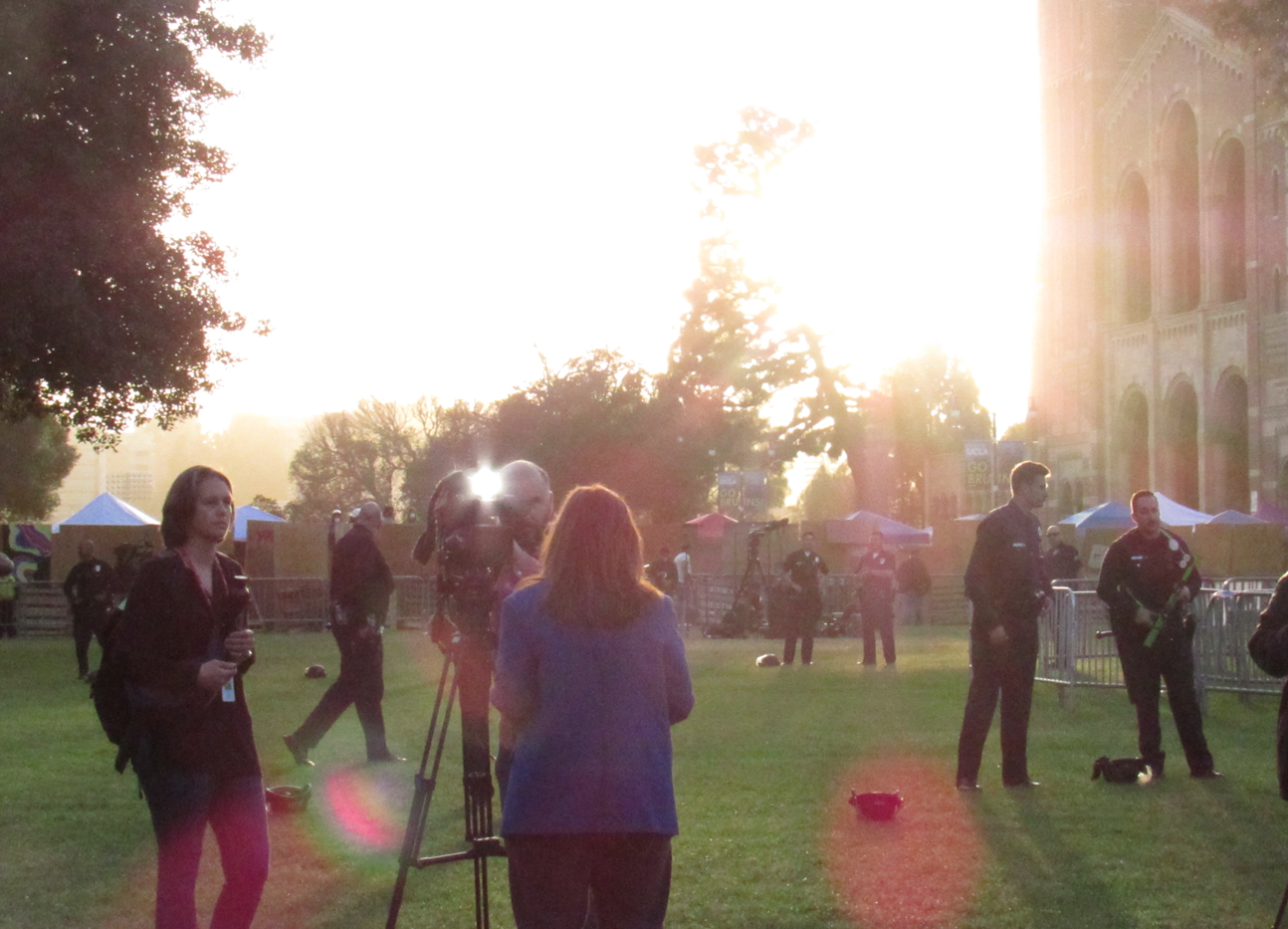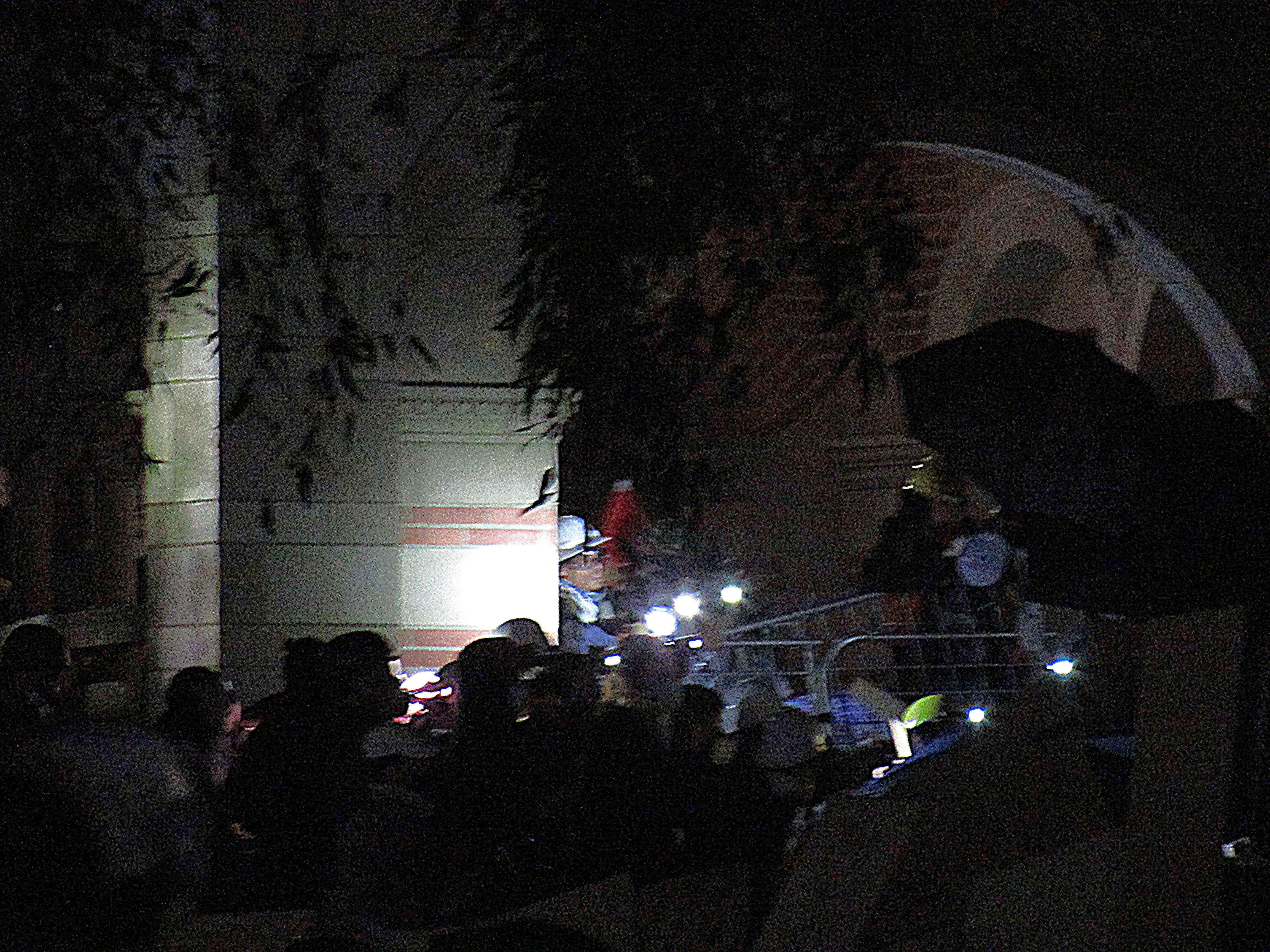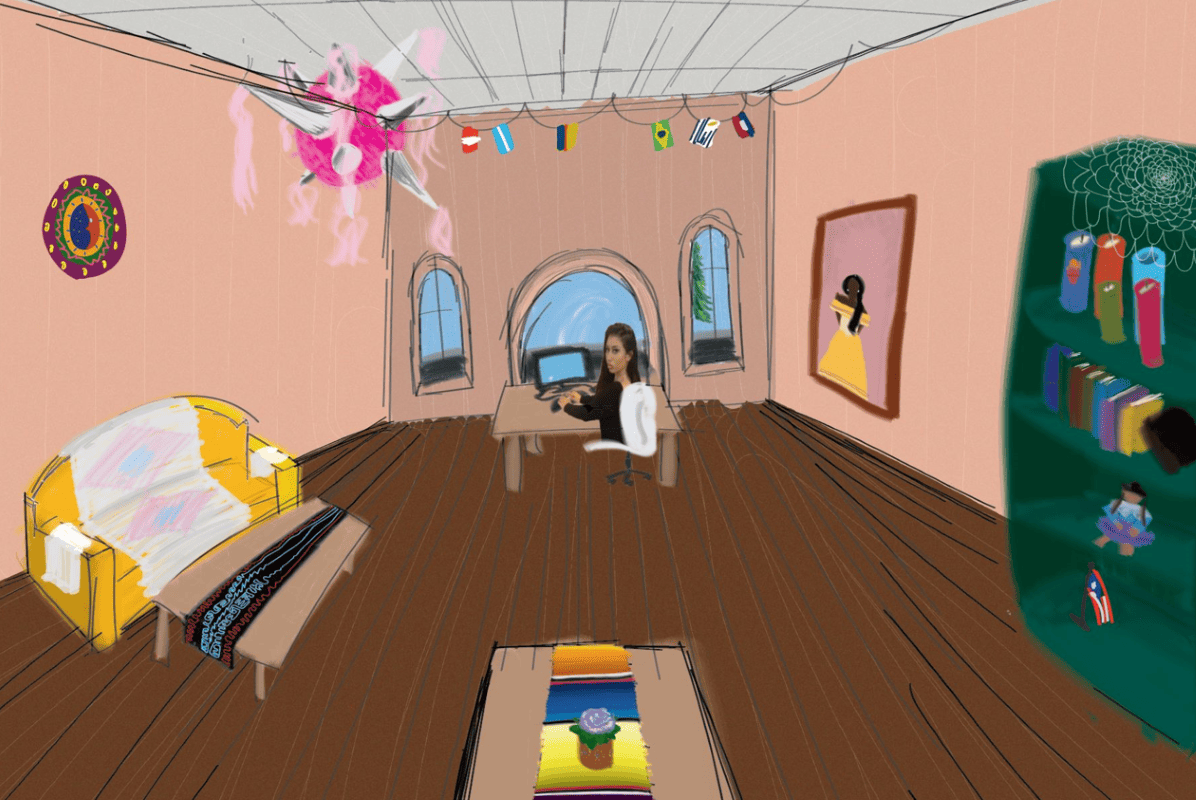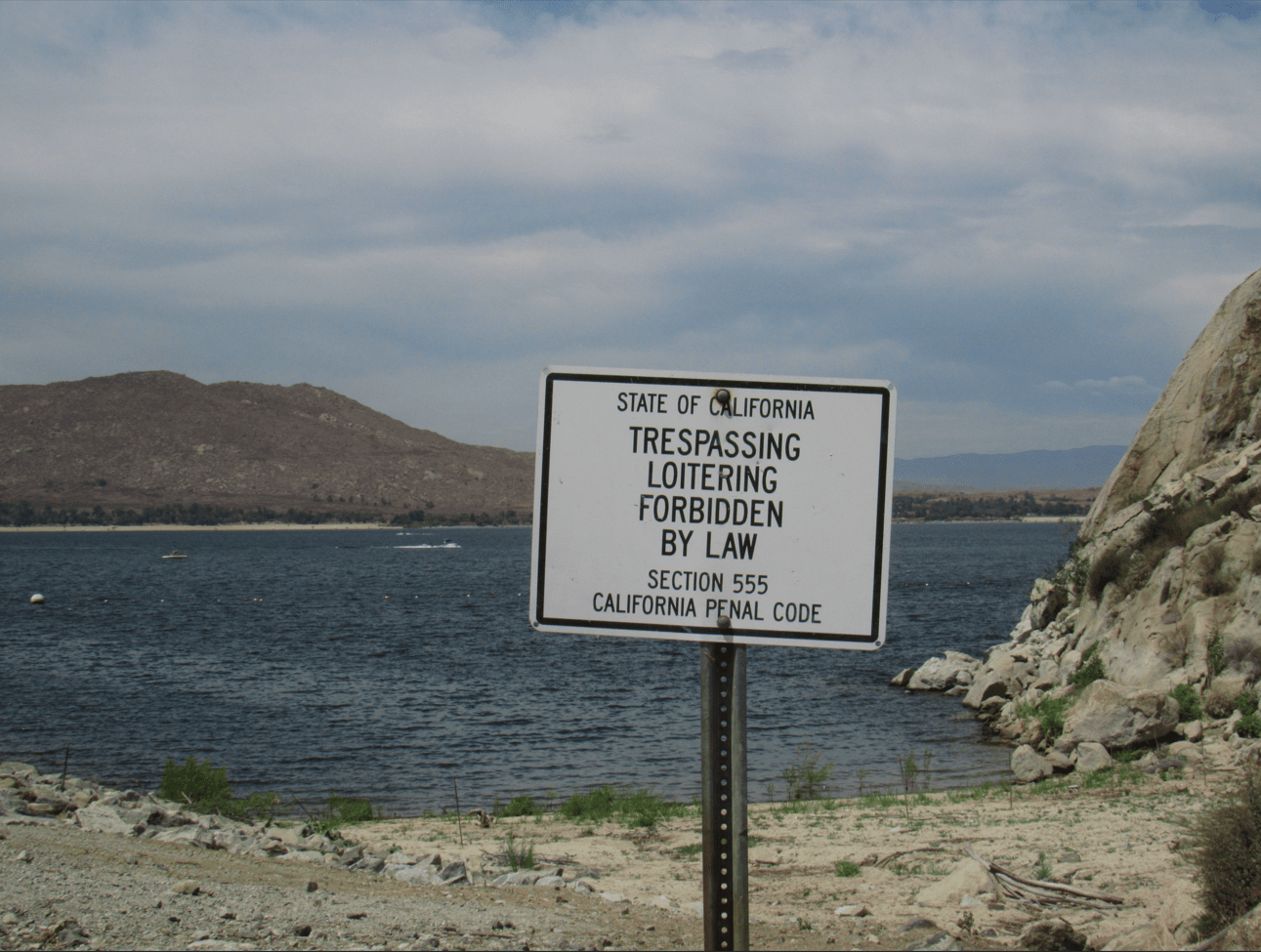Photos by Tommy Correa
BOOM! BOOM! BOOM! The sounds of flash bombs rang through my ears as I watched the LAPD break through the pro-Palestine encampment barricades. The LAPD entered the student encampment at 3:20 a.m., Thursday, May 2, 2024. The encampment that stood in protest of the on-going genocide in Palestine was now being destroyed by policemen. What followed the initial altercation redefined what it meant to be a student reporter.
Twenty-four hours earlier, I observed peaceful formations of students, community leaders, and onlookers as they stood near Kuruvungna Steps during the encampment’s press conference. Activists denounced the brutality of the assault on students on the evening of April 30. Victims recounted their experiences and revealed an array of bruises that will leave an ever-lasting memory with me. Media outlets stood on the sidelines, snap-shotting timeless images and reporting on the developing situation at UCLA. UCLA Radio reported that UCPD only permitted “external organizations” to enter Dickson Plaza and that student media weren’t allowed to report near it. LAPD stood overlooking the large crowds – similar to how they stood with UCPD and SWAT later that same night.
After the conference, the police’s presence created an eeriness as students waited until 6 p.m. for any movement. My team and I followed a crowd of 200 people to the intersection of Portola Plaza where Royce Quad and Dickson Court reside; the protesters guarded the other barrier protecting the encampment. Protesters exchanged phone numbers for jail support, bottles of water, and other numerous forms of aid. A shared sense of unity kept the group’s momentum alive on the sidewalk as they tiredly waited against the barricade.
Not once did I feel unsafe from my peers, but the increasing police presence made me weary. As my team sat restlessly on the curb, we heard whispers from various social media accounts–both of student accounts from within the encampment and of local activists on the scene–of SWAT and police forces entering UCLA from unidentifiable locations.
By 7 p.m., UCLA Radio reported they were removed from their station and my team worried about what this meant for reporters on the scene. One of the six of us had a media pass and collectively, we have never experienced an event with this much uncertainty for our safety. In those moments, I thought about the student reporters who worked for WKCR, Columbia University’s radio station, and their distressed voices as they searched for their peers and their lost belongings at various parts of campus.
What would happen if the LAPD didn’t know we were student journalists? Would they let us go, or would they assault us, similar to hundreds of other students at various institutions across the U.S.? I found myself shaking these thoughts away as I watched the field before me, remembering that the protestors were equally as vulnerable but had each other for support.
Tensions escalated as the LAPD entered Haines and Kaufman Halls and guarded the spaces near Royce Hall and Powell Library. Viewing the cops invade spaces students have found comfort in and then creating hyper-militarized stakeouts to attack said students left me speechless. These buildings are where I found my community. I thought of the restless Tuesday afternoons when I’d admire the plaques of various anthropologists or the countless hours I’d spent chatting with TAs on the latest gossip during office hours. Their presence ultimately disturbed my sacred spaces and to this day, I struggle with returning to my daily routines.
Many students did not know what would occur and many juggled the risk of staying near the barricades for a minute longer. When conversing with friends, the topic of what may arise from this protest lingered. Brutality from the night prior left students like myself uncertain. My experiences participating in protests could not mediate the look of fear and distress in students’ eyes, and the most I could offer was reassurance and hope, even for a brief moment.
However, I too found myself in a dilemma that affects student journalists in times of crisis. The reporter within me wanted to get closer to the scene and provide on-the-scene information to my community. I felt I was prepared for situations like this. Yet, I’m also a student of color who’s vulnerable to the dangers that could transpire and soon I desperately wanted to escape. The editorial staff for the Daily Bruin later stated, “Will someone have to die on our campus tonight for you to intervene, Gene Block?” I feared that regardless of my positionality as a reporter and as a student of color, I had no protection. UCLA would rather have their hands bloody than protect their students.
By midnight on May 2, 2024, the crowds on Portola Plaza shrank significantly, yet protesters continued chanting “Free, Free, Palestine” and “Cops go home” to police standing guard at various locations. The chants reverberated from both Portola Plaza and Kuruvungna Steps, and the energy remained during the final hours of the encampment.
As 2 a.m. approached, the LAPD vehicles continually sent reinforcements onto Portola Plaza, toward Haines Hall and Fowler Museum. The police intended to destroy the encampment and we lost count of the number of officers and artillery–including rubber bullets–they had prepared to use. Detainments were being made on Wilson Plaza and reports of violent altercations between students and police were appearing on students’ Instagram stories. The field where people sunbathed during the day became a warzone where students were forcibly pushed and shoved.
Three a.m. struck and from a distance, I could see the LAPD push against students as they entered the right side of Royce Hall. Fear grew amongst the students as they watched the ongoing violence from afar. We heard flash bombs thrown near the encampment and with each flash, students yelled with a mixture of worry and frustration. The Daily Bruin reported through X, formerly known as Twitter, that CHP threatened to arrest reporters near Royce and Haines Halls and I worried cops would corner us if we interacted. Student reporters on the field had a right to report on the developing situation, yet the police seemed to restrict freedom of the press. Where does the line of free press end when a baton is inches from a student’s skull?
BOOM! A flash bomb was heard closer than what my team and I saw. Panic struck me, and more than half the protesters near the barricade ran towards the Inverted Fountain near Pritzker Hall. I never felt closer to danger than in those 5-10 seconds near the barricade and soon I bolted towards the fountain. Every second counted and I yelled, “Get to the street!” hoping students could evade the police. At that moment, I wanted to protect everyone–both at the encampment and those running alongside me–but fear took over.
The final hours of the encampment’s disarray marked a generational fear and paranoia of police brutality as we navigated toward safety. Every patrol car/officer frightened us as they dashed toward campus. By then, students were attempting to head back to their dorms, but with the increasing police presence, any alteration with law enforcement could easily escalate into violence. Students were virtually stranded on the outskirts of campus because they feared their association near the encampment could warrant an arrest when they desperately wanted to go home. In those moments, our dorms and apartments didn’t feel like home anymore.
“I feel like a coward,” remarked my editor as we sat down to catch our breath; I too felt like a coward. I wanted to do more, to protect my friends in the encampment and to continue reporting, but I was afraid. Student reporters put their lives on the line to report and it’s disheartening for students to question their positionality due to university-sanctioned violence.
As I attempt to heal from this atrocity, I stress about the next event to unravel on campus. I worry for the safety of my friends, my colleagues, and TAs. I questioned the lack of protection and the consistent silencing of student journalists by the UCLA Administration. On the night of the encampment’s removal, the Daily Bruin was barred from entering Haines Hall, despite being granted 24-hour access to the building by Mary Osako, Vice Chancellor of UCLA Strategic Communications. In addition, two Daily Bruin reporters were backed against the Arthur Ashe Student Health and Wellness Center building by a police officer holding a baton out after retreating from a police formation near the center. UCLA Radio reported 12 hours after the destruction that they were still barred from entering their station. Why are we being silenced for reporting on the administration’s wrongdoings? As student media, we are taught to hold all systems accountable, including our university.
On May 5, eight ASUCLA publications– OutWrite, Al-Talib, FEM, Pacific Ties, La Gente, NOMMO Newsmagazines, Bruin Life, and UCLA Radio– jointly condemned the consistent police brutality and repression of students’ first amendment rights by UCLA Administration. Physically preventing students from reporting on current events will not stop us, and to silence us reflects the historic silencing of Palestinian journalists. Al Jazeera reported in May 2024 that the Israeli government unanimously voted to shut down operations of foreign broadcasters, including their offices. In July, the death toll of Al Jazeera reporters reached four deaths after journalist Ismail al-Ghoul and cameraman Rami al-Rifi were killed by an Israeli airstrike. These are not isolated events; institutions are persistently silencing voices vital to Palestinian sovereignty.
When reporting, I think of Shireen Abu Akleh, an Al Jazeera reporter who was brutally killed by Israeli forces on May 11, 2022, despite visibly wearing a helmet and press bullet vest. Abu Akleh was one of 79 Journalists killed in 2022, but a report by the Committee to Protect Journalists (CPJ) reported that 72 of the 99 documented deaths in 2023 were Palestinian journalists, marking a nearly 44 percent increase from the previous year. Where was her protection? Why must it take our bruised bodies to emphasize a fissure in our institutions?
I report because Abu Akleh was stripped of her chance to report. I report to inform my community, both locally and abroad. Palestinian citizens document their daily lives through their phones and their journalism is equally as important as the student reporters that night, but we have allowed racialized institutions to dictate what “truth” is. We must report for people to not only see our truth, but their truth as well. Without the voices of Palestinian journalists, no one is equally represented, including marginalized communities. We must do better to protect student journalists and journalists abroad as we are the visions of truth in our collective futures.





